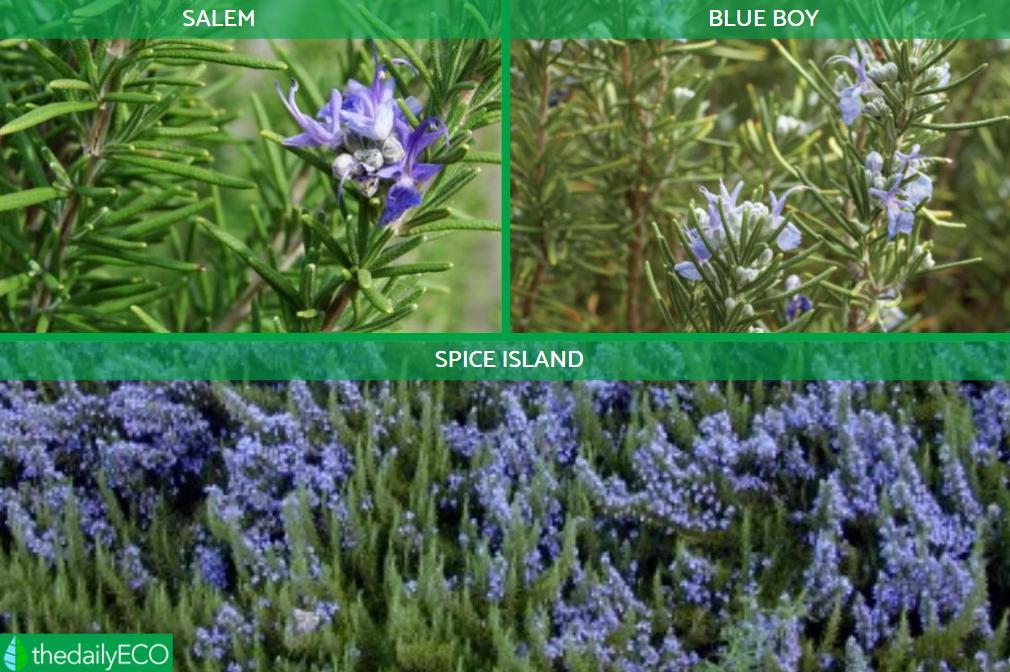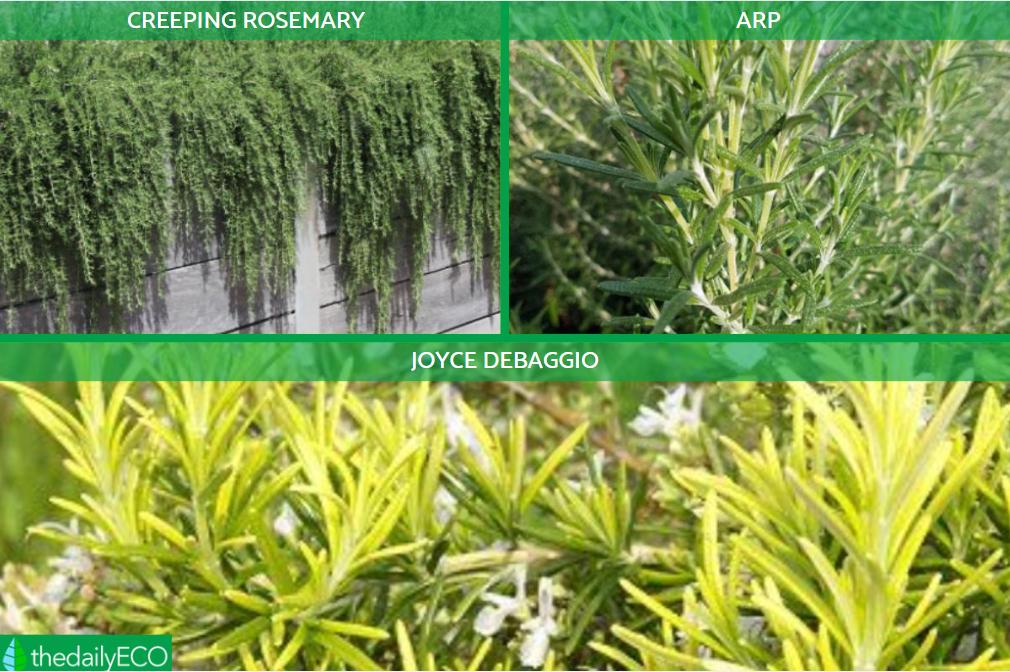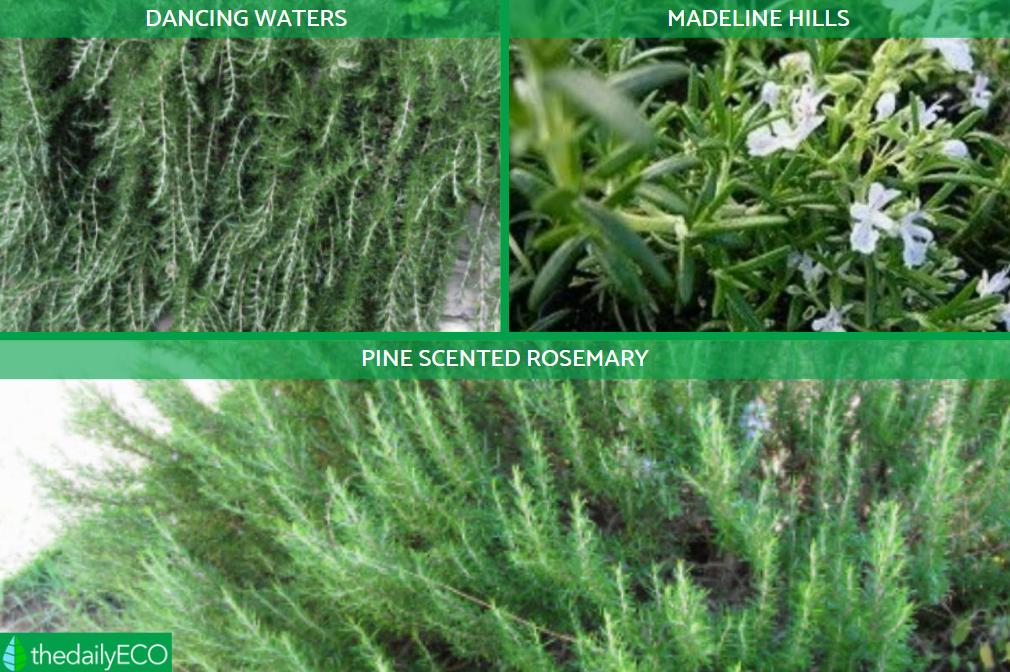Different Types of Rosemary Plants

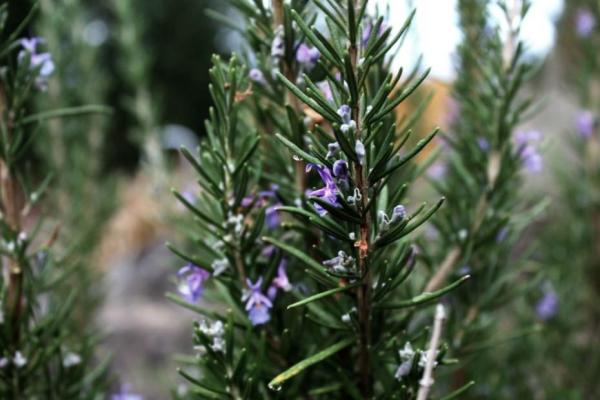
Rosemary, or Rosmarinus officinalis, is a fragrant evergreen shrub with needle-like leaves. Rosemary's popularity dates back to the ancient Greeks, who valued it as a sacred plant. It has been used for centuries in traditional medicine, as it is attributed numerous properties. Although native to the Mediterranean region, rosemary has been cultivated for so long that natural hybrids have been created.
The following thedailyECO article explains everything you need to know about the different types of rosemary, their origins, and their main characteristics.
Origin of the rosemary plant
The term rosemary derives from the Latin ros marinus, which literally means "dew of the sea". The name refers to the location of the plant, which usually grows near the coast.
Rosemary is native to the southern Mediterranean and North Africa, with some species also found in Asia Minor.
This plant was used as a magical plant to combat witchcraft, the evil eye, or to remove envy, as well as to cleanse the environment of diseases such as the black plague. In ancient Rome and Greece, it was also used at weddings to symbolize the couple's love and happiness, as it was considered a sacred herb. In addition to its medicinal properties, it has also gained popularity as a spice in recent decades.
Although rosemary originates from the Mediterranean region, it has been cultivated for so long that natural hybrids have emerged. These variants of this plant have developed special characteristics to adapt to the specific conditions of the environments in which they were grown. In the following section, we will see in more detail some varieties of this plant.
Types of rosemary
Rosemary can be divided into two major groups: creeping rosemary and upright rosemary. As their name suggest, creeping rosemary spreads low and serves as a ground cover, while the latter rosemary shrub grows upright. Below are some of the most popular varieties of this plant and their main characteristics:
Salem
Rosmarinus officinalis Salem, is one of the most popular varieties. This hardy, fast-growing evergreen shrub has an upright, rounded shape and attractive blue flowers. It is prized for its strong, piney fragrance. The striking beauty of Salem rosemary is used primarily for landscaping rather than cooking. It reaches a height and diameter of up to one meter. It needs a lot of sun and more moisture than other varieties, as well as well-drained soil.
Blue boy
Blue Boy, also known as dwarf rosemary, is a rare variety characterized by its small size and long blooming period with light blue flowers above small evergreen leaves. Blue Boy is slow growing and only grows a few inches tall, making it perfect for edging a garden or planting in a container. Blue Boy is quite hardy and can live for several decades if well cared for.
Spice island
'Spice Island' is an upright rosemary with lush, very flavorful foliage. This variety is very popular in kitchens all over the world. Its fresh or dried leaves can add flavor to a variety of dishes. It is also added to certain vinegars and olive oils to create sauces or dressings. Spice Island rosemary grows over 70 cm tall and is therefore often used for small hedges or topiary.
Creeping rosemary
Rosmarinus officinalis Prostratus, also known as Creeping Rosemary, is a low-growing and spreading evergreen shrub with strongly aromatic, needle-like leaves. It grows to about 5 cm tall and is an excellent groundcover, especially when the soil is dry, sandy, or stony.
Arp
Arp rosemary (Rosmarinus officinalis Arp) is a very hardy shrub. It has a stiff, upright habit and blooms in spring with light blue flowers. This species is known for its ability to withstand cold temperatures.
Joyce deBaggio
Rosmarinus officinalis Joyce DeBaggio, also known as golden rain, is a rounded, frost-hardy, evergreen shrub with upright stems bearing linear, aromatic, golden-yellow to yellow-green leaves. It can reach a height of 1.5 m and a width of 1.5 m. This variety tolerates cold temperatures and can survive a winter. Grow in poor, well-drained soil in a sunny, sheltered location.
Other varieties of rosemary
There are even more varieties of rosemary than the ones we just looked at in more detail. This is a list of some of their names:
- Dancing waters
- Madeline hill
- Pine scented
- Bassia scoparia
- Pink rosemary
- Tuscan blue
- White rosemary
Below you will find photos of all these varieties of rosemary.


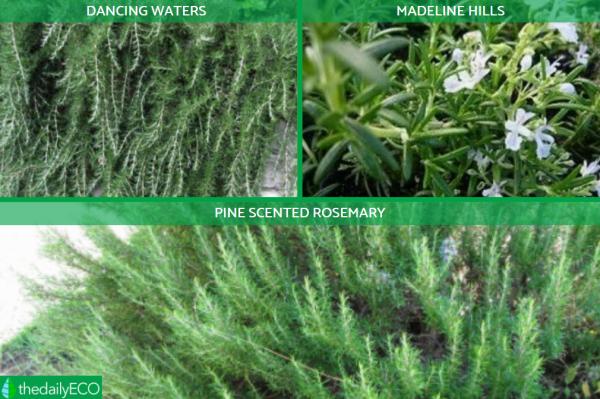

Characteristics of the rosemary plant
Despite the obvious differences between the rosemary varieties we have seen, all of them have some characteristics in common, let us look at some of them:
- All varieties have deep roots and are considered very hardy plants.
- The stem can be creeping or erect, sometimes both.
- The flowers are almost always violet-blue and appear almost all year round.
- The fruit looks like four small dark nuts located at the base of the calyx.
- Almost all species are used in cooking as a spice.
- Almost all species are attributed numerous medicinal properties.
How to care for a rosemary plant
As mentioned earlier, all rosemary varieties are hardy. However, to enjoy a healthy plant, it is better to know its specific needs. These are the main conditions for growing rosemary:
- Light: it must receive direct natural light, even in hot climates. Requires at least 6 to 8 hours of daily exposure to the sun.
- Climate: although some varieties have been able to adapt to the cold, it is generally a plant that prefers warm and moderately dry climates.
- Watering: it requires little irrigation and tolerates drought better than floods, the latter being fatal.
- Soil or substrate: it is not demanding in terms of nutrients, but it is important that the soil provides the best drainage possible. If the plant is in a pot, it is recommended to use coconut fiber in the mixture, as well as perlite and vermiculite.
- Fertilizer: it does not need much, a proportion of organic material or annual fertilizer is enough.
- Pruning: it can be done anytime in the spring or summer, up to four to six weeks before the first frost. The most important thing is not to cut back too far, because rosemary does not regrow from old wood.
- Diseases: Special care should be taken with rot and mold due to excessive moisture. Aphids may occur.
- Propagation: propagation is simple by cuttings and division of the bush. You can propagate rosemary at any time of the year. However, propagation is most successful in late spring to early summer.
Learn more about how to care for a rosemary plant by watching the video we leave for you below. In it, we explain all the reasons why your rosemary plant might be drying.
If you want to read similar articles to Different Types of Rosemary Plants, we recommend you visit our Plant care and cultivation category.






